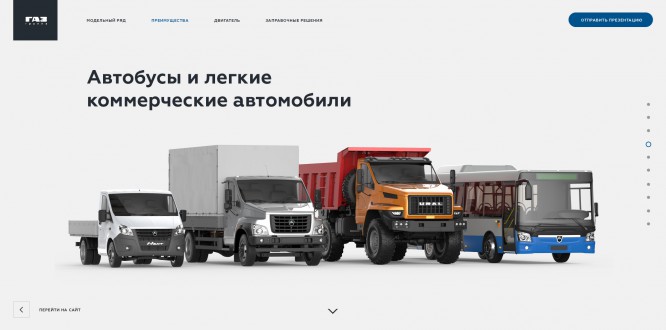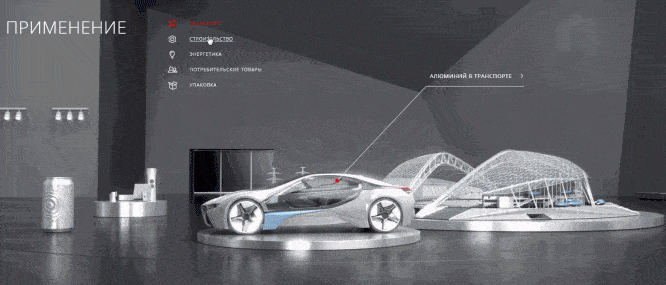3D design in product presentation
3D design in product presentation
87 million Russians aged 12–64 use the Internet in 2017. This figure is given by analysts from Mediascope. A huge solvent audience now leads an inextricable virtual-real life. However, the wider the possibilities, the greater the needs.
Business coach Andreas Boer in his literary bestseller Consumer 3.0. Sales will never be the same again ”heralds the beginning of an era of the critical, discerning customer. “Consumer 3.0 knows what he wants. He certainly will not buy everything that is offered to him, and even more so from anyone, ”the author says.
Entrepreneurs have to tinker with their marketing team to find ideas on how to impress discerning visitors to their sites. Developers, designers and copywriters are involved in the super task. The most advanced digital teams today are striving for a “living” web resource model in which visual and text storytelling interact harmoniously and are simultaneously responsible for both form and content.
3D design helps consumers to remember
Modern Internet users have “clip thinking”: they perceive any information at the level of active viewing with dynamic scrolling. Brands are taking this into account and ditching old product presentation templates. To win the competitive battle and be remembered by the consumer, they rely on visual creativity. They talk about their advantages and benefits for the consumer effectively – through “movable” photorealistic 3D-elements.
Leading digital agencies offer their customers to solve business problems using 3D design. Three-dimensional modeling allows you to visualize any object, structure and mechanism, as well as clearly show them in different circumstances and conditions. It attracts the audience and captures it from the first minutes. The result is high brand loyalty.
What 3D solutions do we use
3D design for the sake of 3D design is pointless. It works only when it solves the company’s business problems: it answers all the user’s questions and convinces him to take an action (buy a product or use a service).
At the stage of website design, we offer customers a presentation of products using 3D: modeling, visualization and animation.
The first solution allows you to construct a visual volumetric image of the desired object, corresponding to its material version. The second is to embody the idea of impressive photorealistic pages that instantly plunge into space and create the effect of presence. The third is to implement the idea of interactive dynamic elements that perform different actions – to show the process of the mechanisms.
Consider specific examples – our sites for the companies “GAZ Group”, “GALS-Development” and “RUSAL”.
3D modeling
3D modeling is the best way to showcase products of any shape and size on a website. So, having won a tender for the creation of several sites at once for the GAZ Group, a renowned domestic manufacturer of transport, we decided to provide each name from all their product catalogs with three-dimensional graphics.

Gazelles, Urals and buses – the entire model range of GAZ Group received 3D 3D support. Now the site user can take a detailed look at each car, evaluate its advantages and make a final decision based on his impressions.
3D visualization
The website of the De Luxe residence on Arbat “Teatralny Dom” is one of our freshest developments for the largest development company “GALS-Development”. The customer decided to update the old site in order to refresh its design and place new accents in a new way. It was necessary to make such a product that conveys the atmosphere of luxury of apartments in a luxury residence and emphasizes the premium quality of its territory.
3D visualization is the optimal solution for the real estate industry, so we applied it for the Theater House. The result is a stylish and expressive website presentation of the residential complex. Its pages are reminiscent of mesmerizing glossy photographs. You flip through them like slides and you can’t tear yourself away from realistic plots. Corporate identity (choice of colors and fonts) further enhances this perception and enhances immersion and engagement.

3D animation
The most illustrative example from the practice of Uplab is an image site about aluminum for the largest Russian manufacturer RUSAL. The content-marketing special project turned out to be unique in its kind – it consists entirely of animation in the form of “3D rooms”. Each section of the site, like an exhibition hall of a museum dedicated to a specific topic, reveals the history, production and use of metal in full and thereby wins the interest of the audience, and behind it – its trust.
For example, the aluminum production process is presented in an animated illustration format, and important milestones in the history of the industry are presented through a visual timeline. The Production section shows how metal is cast into ingots – aluminum ingots are made.

In addition, animated objects on the site can be controlled: start or stop animation, as well as rotate the hall in the “Application” section.

Animation underlies the entire concept of the resource and fulfills its main task – it forms in the user’s mind the idea of aluminum as an important and necessary metal for mankind, an environmentally friendly product
A one-time investment in 3D modeling of objects is a far-sighted step of the client company. Graphics saves on content creation: it can be used in product cards, adapted for placement on different sites.
The preferences of the current consumer in animated content are clear and logical. Everything that passes through visual perception is more convincing for a person. However, the decisive importance lies in the quality of performance. In 3D, every object looks better than in reality.
Technologies are developing: animation, visualization and modeling are organically integrated into the general space of the site and look like one with other elements. Augmented and virtual reality are just around the corner.
3D design is a versatile solution for commercial projects, especially technical and industrial ones. He explains complex things simply, resolves contradictions and finally convinces. With it, “difficult” to perceive raw materials (metals, sand, crushed stone, etc.) looks attractive to the user. Agree, it is better to be able to see the product from all sides than to read the description?
Source: uplab
…

